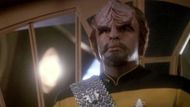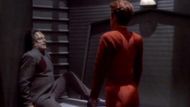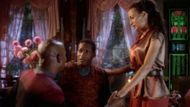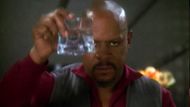Star Trek: Deep Space Nine made a breakthrough in the TV show industry, while continuing to feature an interstellar setting and themes of hope versus despair, human nature and potential effects, dark side versus light side, and telepathic abductions. Character depth, moral complexity, and serialized storytelling became more prevalent in the TV series. In contrast with other Trek series, DS9 dipped into the ugly remnants of war politics and identity with bare-faced honesty.
From powerful throwing bouts to mind-blowing moral quandaries and more personal and near-home adventures, the top 7 episodes demonstrate the series' uniqueness. In either grandiose drama performances, jaw-dropping plot twists, or moving themes, these episodes had a lasting effect on fans and critics alike. From this list, you are about to read the top seven DS9 episodes that defined the series and secured its place in science fiction history.
** Disclaimer: This article is purely based on the writer's opinion. Readers' discretion is advised.**
Top 7 Star Trek: Deep Space Nine episodes
7. The Way of the Warrior (Season 4, Episode 1)

In The Way of the Warrior, the Klingon Empire invades Deep Space to defend the Federation from the Dominion threat. Still, their goal is to invade Cardassia. Captain Sisko invites Lieutenant Commander Worf to negotiate, but the situation worsens, resulting in a battle between the station's personnel and the Klingons.
Despite the intense action and the introduction of Worf to the DS9 cast, the plot relies heavily on spectacle rather than depth. The Klingons' surprise attack, in especially Gowron's choice to attack despite conflicting information, appears hurried and inconsistent with a well-established honor-based civilization.
The episodes contain great battles, and Worf is introduced to DS9, but it is all pieced together too quickly. The attack by the Klingons lacks great reason. Gowron’s choices seem inconsistent. Viewers did not have the regular political tension that makes DS9 so entertaining. That is why this episode is on the #7 ranking.
6. What You Leave Behind (Season 7, Episodes 25 & 26)

As a series finale, the Dominion War and personal arcs of the main characters are expected to be wrapped up in the episode "What You Leave Behind." After months, if not years, of combat, the Federation and its allies pushed the Alliance harder, winning the decisive battle and forcing the Founders to surrender. At the same time, Captain Sisko confronts both Gul Dukat and Kai Winn in the Fire caves, ending with an apparent sacrifice in an attempt to kill the Pah-wraiths. Critics claim that the introduction of the proper ending to the Pah-wraith plot does not appear to have been carefully planned and is not as rich as one would expect from a long-running storyline.
The episode was close to the audience because it provided a strong resolution for Deep Space Nine’s extended arcs’ endings. The climax of the Dominion War brought ferocious brawls and tearful farewells, and Sisko’s giving had a splendid, tragic-mythic turn to it.
The episode concluded on a positive note for the characters who were in love, their character growth, and the long-term effects, even though the Pah-wraith resolution was problematic. Its combination of war, sacrifice, and bittersweet endings meant that for those fans, it was a remarkably memorable finale.
5. Sacrifice of Angels (Season 6, Episode 6)

In this episode, a huge attack is launched by the Federation to reclaim Deep Space Nine from the Dominion. A powerful Dominion-Cardassian armada is confronting a fleet under the command of Fleet Captain Sisko. The fight is fierce, as the Federation wants to keep the Dominion from dismantling a minefield blocking reinforcements from the Gamma Quadrant.
At the station, and what they are doing to undermine the dominion's efforts. Given the circumstances, Sisko transports the Defiant into the wormhole, where he encounters the Prophets. They intervene by removing the fleet of the Dominion, which lets the Federation reclaim the station. The episode then concludes with the awful death of Ziyal, Dukat’s daughter, and thus his breakdown.
In addition, the emotional impact of the death of Ziyal and Dukat’s later breakdown might seem undeniable to some, without proper buildup. This milestone episode reflects the sacrifices made and the turmoil involved in war, regardless of how scrupulous civil society may be.
The fierce space war, high stakes, and the prophet's supposedly last-minute intervention kept viewers riveted to this episode. The Federation’s win seemed earned, but complicated, and Ziyal’s sad death and Dukat’s insanity gave it emotional depth. It displayed the price of war, melding action with powerful characters’ events evocative of what viewers watched.
4. Duet (Season 1, Episode 19)

In “Duet”, the director focuses on the story of a Cardassian, Marritza, who has come to Deep Space Nine suffering from the Kalla-Nohra Syndrome, a disease connected to a particular labour camp during the Cardassian occupation of Bajor. Kira takes him to receive him as a war criminal and detains him. As the investigation blows up, Marritza declares herself to be Gul Darhe’el, the infamous leader of the camp.
This episode is praised for its dramatic performances and touching themes such as guilt, justice, and the after-effects of war. However, for some viewers, the plot revolved around a single character's development, and the abrupt ending may appear to be produced.
This episode hooked the viewers with its high current drama and provocative themes. The guilt and wells of war left by the factors of justice and deception by Marritza were captured by Kira’s emotional trip. The great actors have made all conversations tense and with moral intricacy.
Though some of the denouements came too abruptly, the ending’s unexpected development supported the tragic results of war. Oozing with personal redemption and the implied human cost of conflict, “Duet” left an indelible, moving, deeply felt experience on the audience.
3. Far Beyond the Stars (Season 6, Episode 13)

In “Far Beyond the Stars”, Captain Sisko sees visions of dying as Benny Russell, a Black Science Fiction writer in 50’s New York. In one story, Benny tells about a space station, but its air is thwarted by racism against a Black captain from his editor, who refuses to publish it. Benny, too, is harassed by police, eventually having a breakdown. The episode concludes with Sisko pondering whether Benny is dreaming of him or Benny.
This was in response to viewers who desired a narrative that addressed racism, identity, and the power of storytelling in a way that provoked thought. Benny Russell’s fight imitated true world injustice, and his journey was heartfelt and thrilling. This episode will never be forgotten because of its emotional impact and Avery Brooks' outstanding performance.
2. The Visitors (Season 4, Episode 3)

In “The Visitor”, Captain Benjamin Sisko disappears into subspace due to an accident that occurred aboard the USS Defiant. Jake, his son, is left behind, thinking that his father is gone forever. Yet, Benjamin starts to appear again intermittently in Jake’s life. Fired up to save his father, Jake leaves his writing and studies subspace mechanics. Despite his hard work, he manages to bring Benjamin back forever.
As Jake grows older, he realizes that his own passing while one of Benjamin’s comes back may break the temporal connection. He ingests a lethal amount of medication, and as he passes on in his father’s arms, Benjamin is replayed into the moment just before the accident and can prevent it.
This episode is noted for its emotional depth since it discusses love, sacrifice, and the father-son bond. The interaction between Tony Todd's older Jake forms a serious part of the setting. "The Visitor" is widely regarded as one of the most moving episodes in the Star Trek franchise.
1. In the Pale Moonlight (Season 6, Episode 19)

In this episode, Captain Sisko wants the Federation to recruit the support of the Romulans as his Dominion War casualties increase. He works with Garak on fabricating proof of a Dominion scheme against the Romulans. After a Romulan senator finds out about the forgery, Garak murders him, and he manages to find the evidence, and the Romulans now enter the war. The episode’s final monologue, where Sisko questions whether he can live with his actions—and concludes that he can—is one of the franchise’s most haunting and powerful moments.
One significant sequence, in particular, is generally praised as a pivotal scene involving moral difficulty and the price of war. However, some viewers blast the portrayal of Sisko compromising his values because it seems to buck the Starfleet ethos.
The departure from the typical Star Trek ideals makes the episode one of the most contentious ones the franchise has ever encountered, although it tells a complex plot. That's why this episode ranks among the top 7 episodes of DS9.
These episodes highlight the show’s boldness in tackling uncomfortable themes and deviating from Star Trek’s traditionally utopian narrative. A few were commended for innovation or because they packed an emotional punch, while others were condemned for story momentum or tonal shifts. Ultimately, they added to the legacy of Deep Space Nine, much remembered not for its achievements but for its prerogatives.
